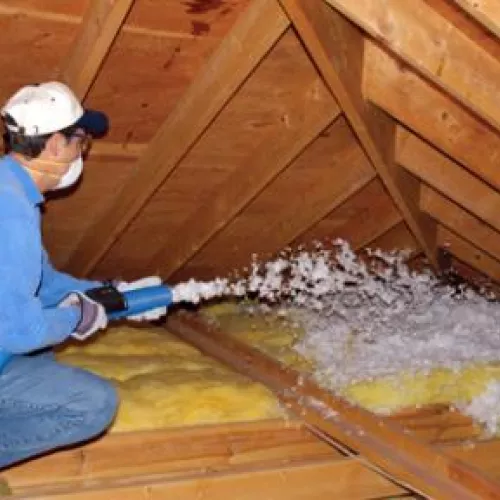Phil Smith, Energy Specialist at the Minnesota Division of Energy Resources, MN Department of Commerce, answers a question from a Southeastern Minnesota resident preparing to re-shingle her roof.
The Question
“I’m adding insulation to the attic of an older farmhouse and am getting conflicting advise regarding the need to insure adequate ventilation in the attic or develop an envelope in the attic that supposedly removes the need to provide adequate ventilation. I will be re-shingling the roof next year and read that the shingle warranties require adequate attic ventilation. What do you recommend? Thanks for whatever help you can provide.”
The Answer
The very first measure that should be presented to you really is one of air sealing the attic.
Air leakage from within the home is the single largest source of attic moisture. Insulation materials do not stop air leakage. Older buildings in almost all cases have vapor barriers in that the first coats of paint ever applied to the ceilings were oil based and form a vapor barrier. Aggressively sealing all the air leaks will bring the ceiling roof assembly up to the same standards as contemporary homes. See the free Home Energy Guide on our Web site: Attic Air Leaks and Ice Dams.
The amount of attic venting you need to keep roofing warranties is minimal, 1 sq. ft. of free vent area for every 300 sq. ft. of attic floor. The ventilation needs to be divided between the low area of the attic and the high area of the attic. Older homes may not have “soffits” and in many cases they may not be open into the attic. If that is the case the use of roof vents low in the roof, but above the insulation will work just as well. An additional alternative would be the use of vents in gable areas. There is no advantage to having extra air movement or extra ventilation. We cover this in our Home Energy Guide: Home Insulation.
| Venting Myth: | Ventilation Fact: |
|---|---|
| Air comes in low, goes out high. | Air movement through vents is driven by air or “wind” movement over the building that create pressure fields, pushing air in and pulling air out. |
Cautionary note: Inspect the wiring in the attic area identifying if any knob and tube wiring is still in use. If knob and tube wiring is in place then it really needs to be replaced prior to adding insulation. While this is another expense, if you discuss it with your insurance agent you may see a drop in your homeowners insurance related to the upgrade and reduced risk.
Want to learn more? See our blog post Keeping your home comfortable for less with air sealing and insulation. You can also see our Building Envelope Links for more resources, and feel free to call us toll free at 1-800-657-3710 or email at [email protected].


